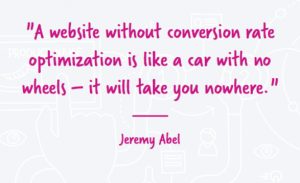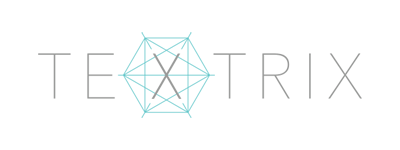When I tell people my consulting practice specializes in conversion rate optimization it can often prompt a quizzical look in response. I get it – it’s “marketing Spock-Talk”.
Conversion rate optimization is the art of ensuring that a customer takes a desired action when in your store, on the phone or on your website or online store.
That desired action can vary. If you have an online store it means they buy something. If your product is a service or something that can’t be purchased easily online (maybe you sell Sherman Tanks) then you might define a conversion as booking an appointment for a test drive? You might wish to build your e-mail list or have people download a white paper.
Marketers have been doing this since the first hand-printed flyer was chipped onto a cave wall. It’s nothing new but neither is the fact that marketing initiatives often don’t get it right.
The amount of information coming at consumers these days has exploded in volume. Converting a shopper into a buyer is actually the art of asking for the sale and it’s sadly the piece that tends to get missed. You can have a website that is loaded with gorgeous images but if it isn’t optimized to get the visitor to take some kind of action – that website is just an expensive, glossy online brochure.
 A website or e-commerce store that’s optimized for conversion is an investment that pays back in spades, not a marketing expense. An optimized site works hard for you and by knowing what to tweak and which metrics to measure, your site can perform with precision and focus.
A website or e-commerce store that’s optimized for conversion is an investment that pays back in spades, not a marketing expense. An optimized site works hard for you and by knowing what to tweak and which metrics to measure, your site can perform with precision and focus.
I always get so excited when I work with a client and first dig into their site. There are so many opportunities to remove the barriers between your customer and your products and services. Customer Friction is a term you may have heard. It refers to the many little irritants that bug someone when they’re navigating your site. They’re like little ticks in the negative column and when a few of them add up – you’ll often lose the customer. The best definition I’ve come across defines friction “as a psychological resistance to a given element in the sales or sign-up process” (Source: MarketingExperiments.com).
Friction in your online experience can be related to:
- Technical issues
- Ease of use
- Consumer motivation and engagement
- Website content issues
Everything from how fast your site loads to your written copy will increase your chanced of connecting with that customer. It used to be enough to have a good website developer to make sure the site had the right key words, tags and structure.
Those days are long gone. Google still controls most of the online search so what they decide is important and Google has decided that engaging content is what’s going to raise a site higher in the search results.
Using a keyword too frequently will cause you to sink in the search results and it’s believed that Google’s spiders aren’t even looking at site meta tags anymore so strong sales conversion can’t rely only on the digital gurus.
 A strong conversion rate optimization strategy needs the artistry of traditional marketing with the precision and measurability of digital marketing.
A strong conversion rate optimization strategy needs the artistry of traditional marketing with the precision and measurability of digital marketing.
It’s where science and psychology meet.
A site owner might be concerned that conversion rate is not strong if their bounce rate is high. Bounce rate is a measurement of how many people left your website after viewing only one page. Not all bounces are created equal though. If the page they view has the address or hours of operation and that’s all the customer wanted, they could then come and visit your business or call you – their action in this case equals a conversion. The bounce rate will be high for that page because the purpose of the page was very functional in nature. Good marketers can interpret the data through the lens of human behaviour.
I really love working with clients who have physical stores in addition to online stores and sites because increasing sales conversion can and should happen in all locations. I once discovered that customers had stopped purchasing because they were lined up for the bathroom and by the time they were able to shop, it was time to get back on the bus. We fixed it by asking the bus driver to stop just out of town so the passengers could visit the loo before they arrived. Sales went back up.
If you value great content and want to use it to help your business grow, I’d love to help. Drop me a note at michelle@textrixconsulting.com and let’s discuss possibly working together.
Michelle

